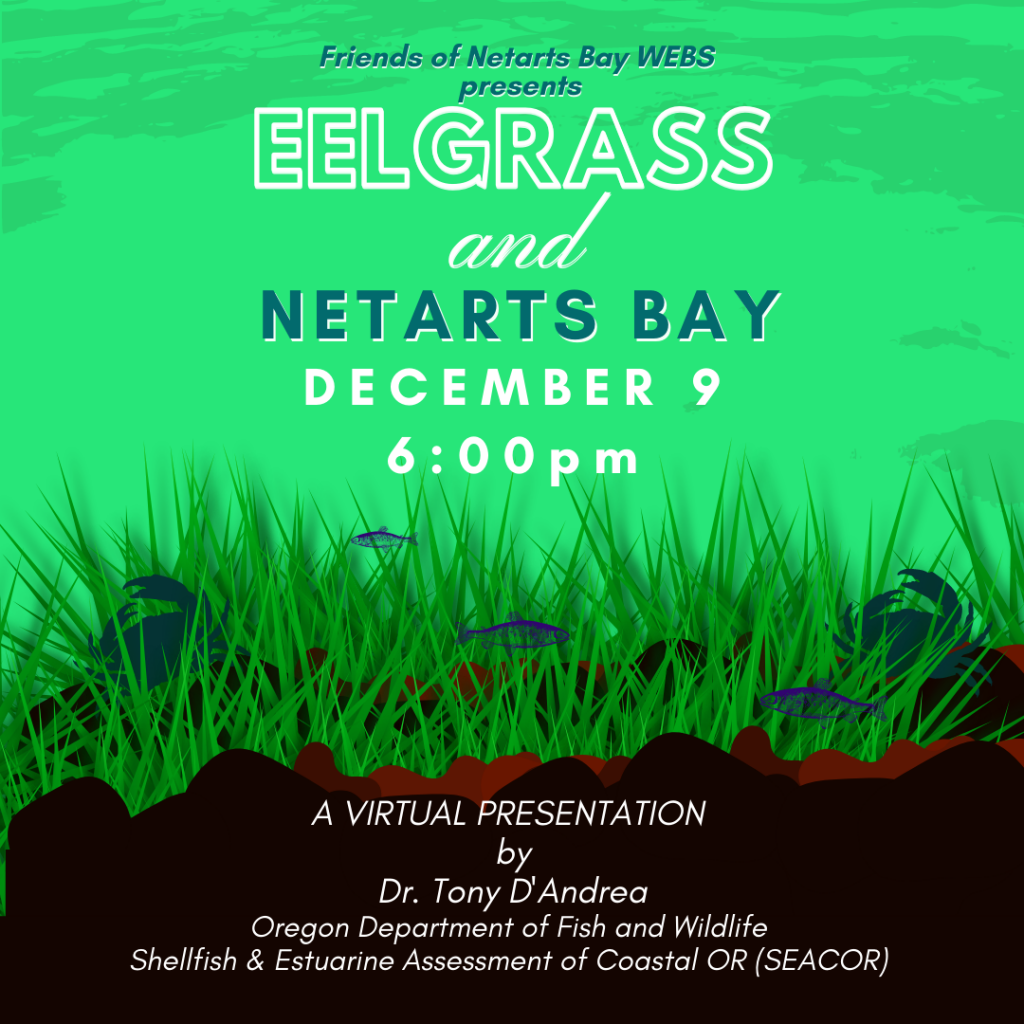Have you ever wondered about those dark green, slippery blades of grass that can be seen billowing just below the bay’s surface as the tide moves in and out? No doubt you have come across piles of it washed ashore when walking along the beach.
This long, mysterious substance is called eelgrass. A flowering aquatic plant, eelgrass is considered to be a foundation or habitat forming species.
“Eelgrass plays an important role in bays and estuaries,” noted Chrissy Smith, the executive director for the Friends of Netarts Bay WEBS, which is hosting a virtual presentation on eelgrass and Netarts Bay on Dec. 9.
“These plants provide homes for other animals, act as a nursery for many different fish and invertebrates, and are a food source as well. From birds to seals, these beds are a vital piece of our bay.”
Unlike many neighboring bays in Oregon, Netarts Bay is home to thriving native eelgrass beds. However, eelgrass is easily impacted by humans.
“The introduction of invasive eelgrass species, dredging, boat activity, aquaculture practices , and nutrient runoff from land can all impact native eelgrass populations,” Smith said.
To learn more about eelgrass, the impact it has on estuaries, and how the eelgrass population in Netarts Bay is changing, join Chrissy Smith and the Friends of Netarts Bayfor a virtual presentation on Dec. 9 from 6 – 8 p.m with Dr. Tony D’Andrea with the Oregon Department of Fish and Wildlife.
 Dr. D’Andrea will discuss efforts by ODFW’s Shellfish & Estuarine Assessment of Coastal Oregon (SEACOR). SEACOR conducts field surveys of Oregon estuaries to assess bay clam populations, map estuarine habitats, and inform the public of the findings. Results of these surveys have been used to manage bay clam fisheries, update estuarine inventories of important habitats such as native eelgrass (Zostera marina), and to better understand bay clam ecology and habitat requirements.
Dr. D’Andrea will discuss efforts by ODFW’s Shellfish & Estuarine Assessment of Coastal Oregon (SEACOR). SEACOR conducts field surveys of Oregon estuaries to assess bay clam populations, map estuarine habitats, and inform the public of the findings. Results of these surveys have been used to manage bay clam fisheries, update estuarine inventories of important habitats such as native eelgrass (Zostera marina), and to better understand bay clam ecology and habitat requirements.
“Dr. D’Andrea will be presenting on the historic changes of eelgrass in Netarts over time,” said Smith. “He will discuss native eelgrass populations and how they are competing with an invasive species from Japan, and he will talk about eelgrass beds and shellfish habitat.”
Smith added that, “if you are concerned about the loss of eelgrass habitat or have questions about balancing other important bay activities like shellfish harvesting or fishing with eelgrass health, this is a great opportunity to learn and ask questions.”
To register for this event, visit explorenaturetillamookcoast.com


